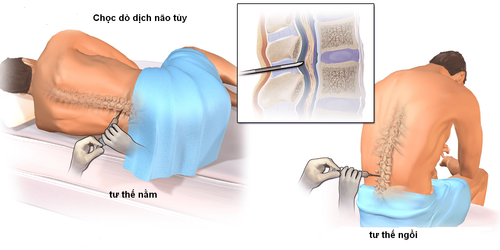This is an automatically translated article.
Aredia is a medication commonly used to treat Paget's bone disease. This medication is also used to treat high blood calcium levels caused by cancer (also called malignant hypercalcemia). To better understand the use of the drug Aredia is what? What are the side effects of Aredia? What is the correct way to drink? What points should you pay attention to when using? The following article will help you better understand the drug Aredia.
1. What is Aredia?
Aredia is a bisphosphonate drug that changes the formation and breakdown of bone in the body.1.1. Dosage form: Solution for infusion 30mg
1.2. Active ingredient: Pamidronate disodium
1.3. Pharmacodynamics: Pamidronate disodium, the active ingredient of Pamidronate, has the ability to inhibit the destruction of bone cells caused by osteoclasts. It binds strongly to hydroxyapatite crystals and inhibits their formation and dissolution in vitro. In vivo, the inhibition of osteoclast activity by osteoclasts is at least partly due to the drug's binding to bone minerals. Pamidronate prevents the penetration of osteoclast precursors to bone and prevents these substances from being converted into true osteoclasts with the function of bone resorption. However, binding of bisphosphonates to bone is considered to be the main mode of direct local action against bone resorption as documented in in vitro and in vivo studies. Experimental studies have demonstrated the inhibitory effect of pamidronate on tumor-induced bone resorption when used in cancer cell transplantation. The biochemical changes that reflect the effect of pamidronate in inhibiting tumour-induced hypercalcemia are noted by a decrease in serum calcium and phosphate followed by a decrease in calcium and phosphate excretion. and hydroxyproline in the urine. Hypercalcemia can lead to a decrease in extracellular fluid and a decrease in glomerular filtration rate (GFR). Thanks to its inhibitory effect on serum calcium levels, Pamidronate improved GFR and decreased serum creatinine in most patients. In clinical studies in patients with metastatic bone resorption or multiple myeloma, pamidronate was shown to prevent or delay complications (hypercalcemia, fractures, radiation therapy, bone surgery). , spinal cord compression) and has the effect of relieving bone pain. When co-administered with anti-cancer drugs, pamidronate has been shown to slow the growth of bone metastases. Furthermore, treatment with pamidronate may show a stabilizing effect or a fibrous appearance on radiographs in cases already resistant to toxin and hormone therapy. Paget's disease of bone, which is characterized by foci of increased bone resorption and increased bone formation with qualitative changes in bone remodeling, responds well to pamidronate. Clinical and biochemical remission is demonstrated by bone scintigraphy, decreased urinary hydroxyproline and serum alkaline phosphatase, and clinical improvement.
Preclinical safety data:
Toxic effects of pamidronate are manifest directly (cytotoxicity) with highly perfused organs, especially the kidneys, after angiography. The product is not mutagenic and does not appear to have a carcinogenic risk.
1.4. Pharmacokinetics General:
Pamidronate has a strong affinity for calcified tissues, and total clearance of pamidronate from the body was not observed during the test period. The calcifications are therefore considered to be the site of drug elimination. Absorption: Pamidronate disodium is administered intravenously. Complete absorption is determined after infusion.
Distribution: Plasma concentrations of pamidronate increase rapidly after initiation of infusion and decrease rapidly when infusion is stopped. The half-life of the drug in plasma is about 0.8 hours. Stable concentrations are thus achieved with a longer infusion time of 2-3 hours. Peak plasma pamidronate concentrations of about 10 mmol/ml are achieved after a 1-hour intravenous infusion of 60 mg. In animals as well as in humans, retention of pamidronate was the same after each dose. Thus, the accumulation of pamidronate in the bone will be unlimited, and only dependent on the total dose of the drug subsequently enhanced. The rate of circulating pamidronate bound to plasma proteins is quite low (about 54%); and increases when calcium levels are abnormally high. Elimination: Pamidronate also does not appear to be eliminated by biotransformation. Following intravenous infusion, approximately 20-25% of a dose is recovered in the urine as unchanged drug within 72 hours. During the test, the rest of the drug remained in the body. The proportion of dose that is also retained in the body is independent of both dose (range 15-180 mg) and infusion rate (range 1.25-60 mg/hour). Urinary excretion of pamidronate is biphasic, with a half-life of between 1.6 and 27 hours. Total plasma clearance is about 180 mL/min and renal clearance is about 54 mL/min, and tends to correlate with creatinine clearance.
Some patient characteristics:
The hepatic clearance and metabolic clearance of pamidronate are negligible. Impaired liver function therefore does not significantly affect the pharmacodynamics of pamidronate. Pamidronate thus has a secondary role in drug interactions at the metabolic as well as protein-binding levels (see above). Mean plasma AUC values are usually more than twice as high in subjects with severe renal impairment (creatinine clearance < 30 ml/min). The rate of urinary excretion decreases with a decrease in creatinine clearance, although total urinary excretion is not significantly affected by renal function. Therefore, the ability to retain pamidronate in the body is similar in patients with renal impairment and without renal impairment, and dose adjustment in these patients is not necessary when taking the recommended doses.
2. What are the effects of Aredia?
Pamidronate is used to treat high blood calcium levels and bone diseases (bone metastases/lesions) that can occur with certain types of cancer. It is also used to treat certain types of bone disease (Paget's disease) that cause bone deformities and weakness. Pamidronate belongs to the group of drugs called bisphosphonates. It works by slowing the growth of calcium in the bones to lower blood calcium levels, reduce the risk of fractures, and reduce bone pain.
3. Aredia side effects
Get emergency medical help if you have signs of an allergic reaction: hives; shortness of breath; swelling of the face, lips, tongue, or throat. Call your doctor right away if you have:
High fever; New or unusual pain in your thigh or hip; A seizure ; kidney problems - urinating little or no, swelling feet or ankles, feeling tired or short of breath; low potassium--leg cramps, constipation, irregular heartbeat, fluttering in your chest, increased thirst or urination, numbness or tingling, muscle weakness or flaccid feeling; or Low calcium levels--muscle spasms or spasms, numbness or tingling (around the mouth, or in the fingers and toes). Common side effects may include:
Fever, headache; Bone pain; Hypertension ; nausea vomiting; Low calcium or phosphate levels; or Pain, redness, swelling, or a hard lump under the skin around the IV needle. This is not a complete list of side effects and other possible side effects. Call your doctor for medical advice about side effects.
4. Drug interactions
Aredia can harm your kidneys. This effect is increased when you also take certain other medicines, including: antivirals, chemotherapy, injectable antibiotics, medicine for bowel disorders, medicine to prevent organ rejection, injectable osteoporosis medicine and some pain or arthritis medicines (including aspirin, Tylenol, Advil, and Aleve).
Other drugs may interact with pamidronate, including prescription and over-the-counter medicines, vitamins, and herbal products. Tell your doctor about all your current medicines and any you start or stop using.
5. How to use Aredia effectively
5.1. Adult dosing of pamidronate The usual adult dose for malignant hypercalcemia is
60-90 mg as a single dose and intravenously by slow infusion approximately every 2 to 24 hours. Longer duration of infusion (eg, more than 2 hours) is likely to reduce the risk of nephrotoxicity, particularly in patients with pre-existing renal impairment. If blood calcium levels remain elevated or recur and may require a second dose of the same dose as the first. There should be at least 7 days between injections. Reaction to the next dose may lessen. Patients with frequent recurrent hypercalcemia may require pamidronate infusions every 2 to 3 weeks to maintain normal calcium levels. Usual Adult Dose for Paget's Disease
30 mg IV over 4 hours over 3 consecutive days. A small number of patients receive more than one treatment with similar dosages. Usual Adult Dose for Bone Cancer myeloma
90 mg IV every 4 hours for up to 9 months. Usual Adult Dose for Bone Cancer Due to Metastatic Cancer breast
90 mg IV, infusion 2 hours every 3-4 weeks. 5.2. What is the pediatric dose of pamidronate? Over 1 year of age: 0.5-1 mg/kg IV by slow infusion over 24 hours.
If blood calcium levels remain elevated or recur, a second dose of the same dose as the first may be needed.
There should be at least 7 days between injections
5.3. In case of emergency or overdose? In the event of an emergency or overdose, immediately call 911 or go to the nearest local health station.
5.4. What should you do if you miss a dose? If you forget to take a dose, take it as soon as possible. However, if it is almost time for your next dose, skip the missed dose and take your next dose at the scheduled time. Do not take twice the prescribed dose.
6. Precautions/Warnings when taking Aredia
What should you know before taking pamidronate?
Before deciding to use this drug, it is necessary to carefully weigh the effects and harms caused by the drug. Consider the following:
Allergies
Tell your doctor if you have ever had any unusual or allergic reaction to this or any other medicine. Tell your doctor if you have any allergies, such as to foods, dyes, preservatives, or animals. For over-the-counter drug products, read the label or ingredient package carefully.
Pediatric patients
There are no appropriate studies on the compatibility of age with the effects of Pamidronate injection in children at the time of initiation of therapy. Safety and effectiveness have not been established.
Elderly
To date studies have not demonstrated geriatric-specific problems that would limit the effects of pamidronate in the elderly.
Things to keep in mind if you are pregnant or breast-feeding There are not enough studies to determine the risks of taking this medicine during pregnancy or breast-feeding. Before taking medication, always consult with your doctor to weigh the benefits and risks. This drug belongs to group D drugs for pregnancy.
Note: Classification of drugs used for pregnant women:
A= No risk; B = No risk in some studies; C = Possible risk; D = There is evidence of risk; X = Contraindications; N = Don't know yet.
7. How should you store pamidronate?
Store at room temperature, away from moisture and light. Do not store in the bathroom. Do not store in the freezer. Each drug may have different storage methods. Read the storage instructions on the package carefully, or ask your pharmacist. Keep medicine out of reach of children and pets.
Do not throw medicine down the toilet or plumbing unless told to do so. Dispose of medication properly when it is past its expiration date or cannot be used. Consult your pharmacist or local waste disposal company about safe disposal of medications.
Please dial HOTLINE for more information or register for an appointment HERE. Download MyVinmec app to make appointments faster and to manage your bookings easily.













